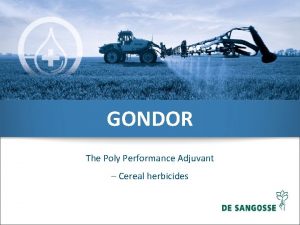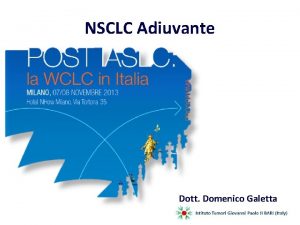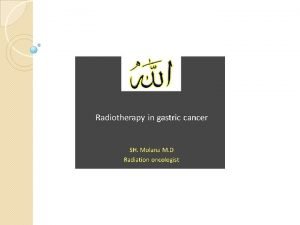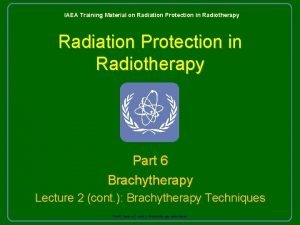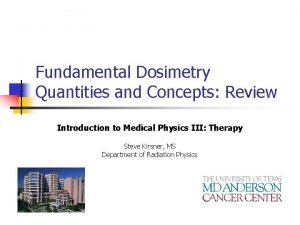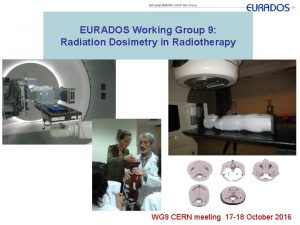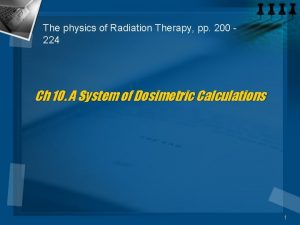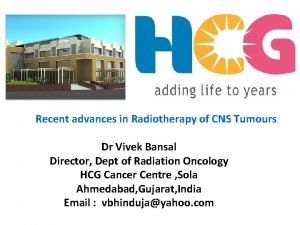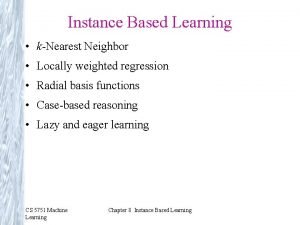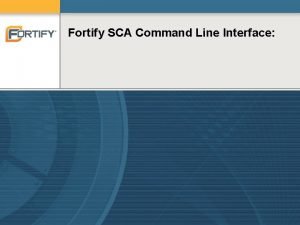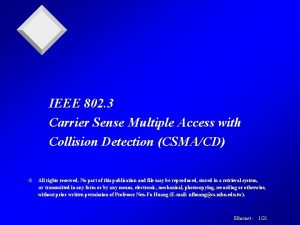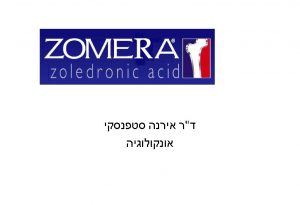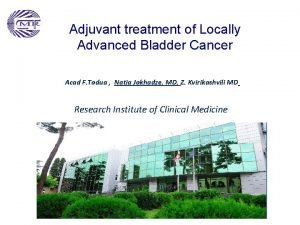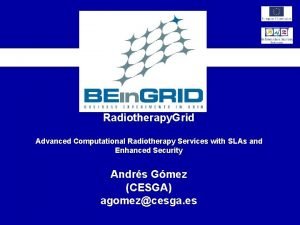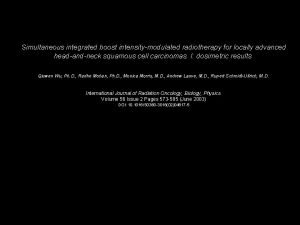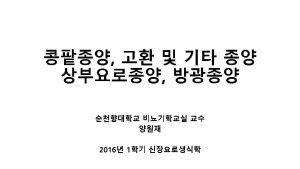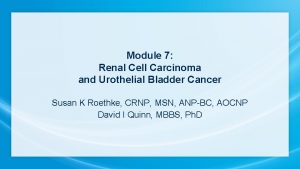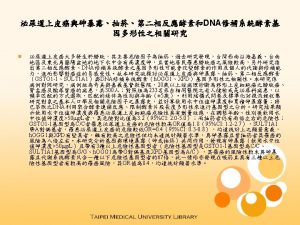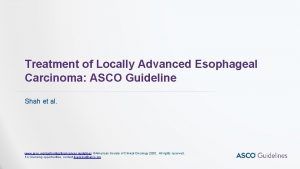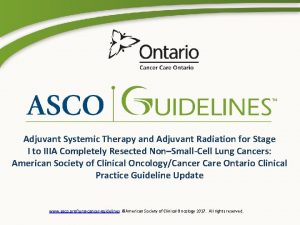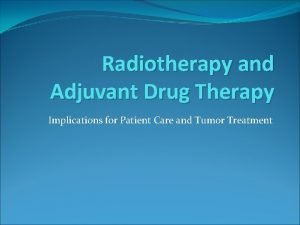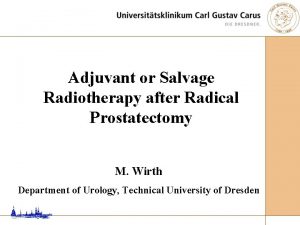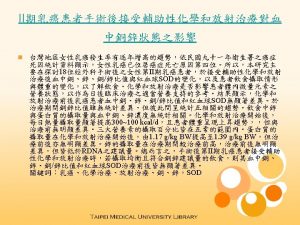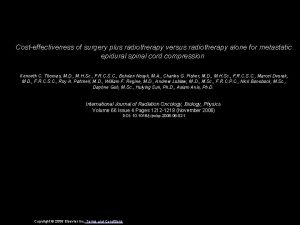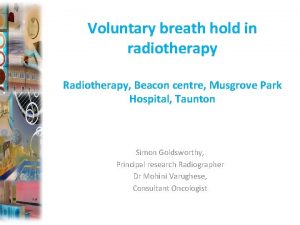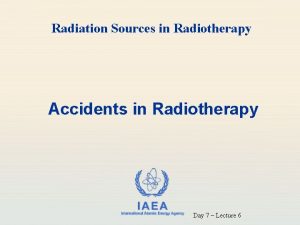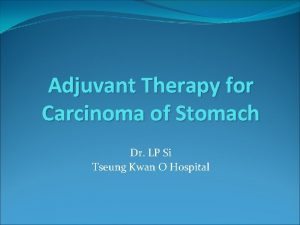Adjuvant Radiotherapy for Locally Advanced Urothelial Carcinoma of





















- Slides: 21

Adjuvant Radiotherapy for Locally Advanced Urothelial Carcinoma of the Upper Urinary Tract R 3 鄭詠仁 Yung-Jen Cheng M. D. 國立成功大學附設醫院 放射腫瘤科 Department of Radiation Oncology National Cheng Kung University Hospital, Tainan, Taiwan

Background Urothelial carcinoma of the upper urinary tract (UTUC) Ø Transitional cell carcinoma (TCC) of the renal pelvis or ureter Ø A rare entity of malignancy The role of adjuvant therapy after curative surgery to advanced stage UTUC?

Epidemiology in Taiwan (2013) Ref: 衛生福利部國民健康署 (2017, Jan 10) 102年癌症登記年報

Epidemiology in Europe report The European Association of Urology (EAU) Guideline Group Urothelial Carcinoma (TCC): Ø Bladder tumors: 90 -95% Ø Upper urinary tract: 5 -10% In Taiwan: 40. 9% (UTUC)

Prognosis outcome & Pattern of failure

p 12 centers, 1363 patients, 1992 -2006, retrospective Results Prognostic variables: Ø Ø Tumor grade T stage LN status LVI Neoadjuvant and/or adjuvant C/T was administered to 3% and 13% Postoperative R/T was administered to 2%

Pattern of failure 30 -year experience in 252 patients. Hall MC, Urology. 1998 – LR: 9% – new invasive urothelial tumors: 69% – DM: 22% – 30% with stage III and 52% with stage IV received post-OP R/T [Median dose: 39. 8 Gy. (range 10 to 60)] 65 patients with locally advanced disease (T 3 -4 N 0 or N+). Catton CN, Urol Oncol. 1996 – DM: 53%, and LRF: 35% – If N+, DM: 77%; LRF: 95% – 85% received post-OP R/T (35 Gy/ 20 fx)

Role of adjuvant C/T in locally advanced UTUC No randomized trials… Most extensive observational data from NCDB Ø 3253 patients, 2004 -2012, retrospective Ø AC or observation after RNU Renal function is a big question!

Aim of our study Define the benefit of adjuvant R/T following curative surgery of locally advanced UTUC by determining the clinical outcomes in our institution

Methods 2006 -2015 Pathological T 3/4 and/or N+ UTUC The administration of adjuvant R/T or chemotherapy (C/T) was at physician’s discretion All patient data, including staging information, treatment and outcome variables, were collected retrospectively by chart review Exclusion Distant metastasis Synchronous bladder cancer History of previous R/T History of any malignancy (unless free of cancer for at least 10 years)

Statistical Analysis Kaplan-Meier method & log-rank tests were used to estimate: Ø Ø Cancer-specific survival (CSS) Loco-regional recurrence-free survival (LRFS) Bladder recurrence-free survival (BRFS) Distant metastasis-free survival (DMFS) Differences in risk-adjusted outcomes between RT and non-RT groups were assessed using a multivariate Cox proportional hazards model

End points Loco-regional failure ü Any recurrence in the tumor bed, regional nodes, or in the ureteral stump Distant metastasis ü Any relapse outside the aforementioned regions excluding the bladder Bladder recurrence ü Pathologically confirmed recurrence within the bladder (not included in the R/T field) All events were timed from the beginning of initial radical surgery

Results

Results A total of 106 patients had p. T 3 -4 and/or N+ UTUC Post-OP R/T was administered in 20 (18. 9%) of patients Post-OP C/T was administered in 46 (43. 4%) of patients (most GC) Median dose of RT was 50. 4 Gy (range, 45. 0 to 64. 8 Gy), all IMRT Median follow-up time: 29. 3 months

Patient Demographics and Clinical Characteristics

Patient Demographics and Clinical Characteristics

Survival analysis 84. 4% vs. 73. 1% 81. 5% vs. 60. 9% 92. 3% vs. 77. 4% 73. 1% vs. 59. 1% p=0. 38

Multivariate analysis with Cox hazards regression

Conclusions In patients with locally advanced stage UTUC who had received curative surgery, the following adjuvant R/T may improve loco-regional control Adjuvant R/T may be another considerable treatment modality, especially as an alternative treatment for patient who is not suitable to receive adjuvant C/T More qualified patients recruitment and longer follow-up time are necessary for further persuasive results

Acknowledgements Presenter Supervisor 鄭詠仁 醫師 薛尉廷 醫師 Yung-Jen Cheng Wei-Ting Hsueh E-mail: waynealex 0000@gmail. com E-mail: seine@mail. ncku. edu. tw 國立成功大學附設醫院 放射腫瘤科 Department of Radiation Oncology National Cheng Kung University Hospital, Tainan, Taiwan

Thank you for your listening
 Adjuvant nsclc
Adjuvant nsclc Gondor adjuvant
Gondor adjuvant Domenico galetta
Domenico galetta Adjuvant neoadjuvant palliative
Adjuvant neoadjuvant palliative Radiotherapy
Radiotherapy Wedge factor radiotherapy
Wedge factor radiotherapy Radiotherapy
Radiotherapy Ssd and sad technique in radiotherapy
Ssd and sad technique in radiotherapy Siemens radiotherapy
Siemens radiotherapy Radiotherapy
Radiotherapy The name tinikling is a reference to bird locally known as
The name tinikling is a reference to bird locally known as Species vary locally main idea
Species vary locally main idea Irit dinur locally testable codes
Irit dinur locally testable codes Lt in p&id
Lt in p&id Locally weighted regression in machine learning
Locally weighted regression in machine learning Species vary locally
Species vary locally How do species vary locally
How do species vary locally Locally testable codes
Locally testable codes Think globally, act locally assignment
Think globally, act locally assignment Species vary locally examples
Species vary locally examples Fortify cli
Fortify cli Locally administered address
Locally administered address

